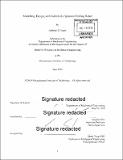| dc.contributor.advisor | Sangbae Kim. | en_US |
| dc.contributor.author | Stuart, Anthony D.,S.B.Massachusetts Institute of Technology. | en_US |
| dc.contributor.other | Massachusetts Institute of Technology. Department of Mechanical Engineering. | en_US |
| dc.date.accessioned | 2019-12-13T18:58:16Z | |
| dc.date.available | 2019-12-13T18:58:16Z | |
| dc.date.copyright | 2019 | en_US |
| dc.date.issued | 2019 | en_US |
| dc.identifier.uri | https://hdl.handle.net/1721.1/123263 | |
| dc.description | Thesis: S.B., Massachusetts Institute of Technology, Department of Mechanical Engineering, 2019 | en_US |
| dc.description | Cataloged from PDF version of thesis. | en_US |
| dc.description | Includes bibliographical references (page 37). | en_US |
| dc.description.abstract | Spherical rolling robots offer a number of advantages over traditional wheeled robots. Their geometry allows for increased mobility and the inability to tip over, while their enclosed design provides protection for the electronic and mechanical components driving the robot. However, these advantages come with significantly more complex system dynamics, with design parameters impacting system performance in sometimes non-intuitive ways. This thesis explores the effect of different design parameters such as sphere mass and center of mass location on the performance of a spherical rolling robot. A kinematic and dynamic model of the system was created, along with a first iteration of the mechanical design to generate realistic starting values for the simulation. The system dynamics were linearized and used to design a linear quadratic regulator (LQR) controller. Sphere mass and center of mass location were varied across a range of values and simulated to analyze the system's ability to quickly converge to position and velocity set points. This study found that increasing the mass of the sphere resulted in a linear increase in settling time, while increasing the radial distance between the center of mass and the sphere caused an exponential decrease in settling time, up until a critical point. | en_US |
| dc.description.statementofresponsibility | by Anthony D. Stuart. | en_US |
| dc.format.extent | 37 pages | en_US |
| dc.language.iso | eng | en_US |
| dc.publisher | Massachusetts Institute of Technology | en_US |
| dc.rights | MIT theses are protected by copyright. They may be viewed, downloaded, or printed from this source but further reproduction or distribution in any format is prohibited without written permission. | en_US |
| dc.rights.uri | http://dspace.mit.edu/handle/1721.1/7582 | en_US |
| dc.subject | Mechanical Engineering. | en_US |
| dc.title | Modelling, design, and control of a spherical rolling robot | en_US |
| dc.type | Thesis | en_US |
| dc.description.degree | S.B. | en_US |
| dc.contributor.department | Massachusetts Institute of Technology. Department of Mechanical Engineering | en_US |
| dc.identifier.oclc | 1130061643 | en_US |
| dc.description.collection | S.B. Massachusetts Institute of Technology, Department of Mechanical Engineering | en_US |
| dspace.imported | 2019-12-13T18:58:15Z | en_US |
| mit.thesis.degree | Bachelor | en_US |
| mit.thesis.department | MechE | en_US |
